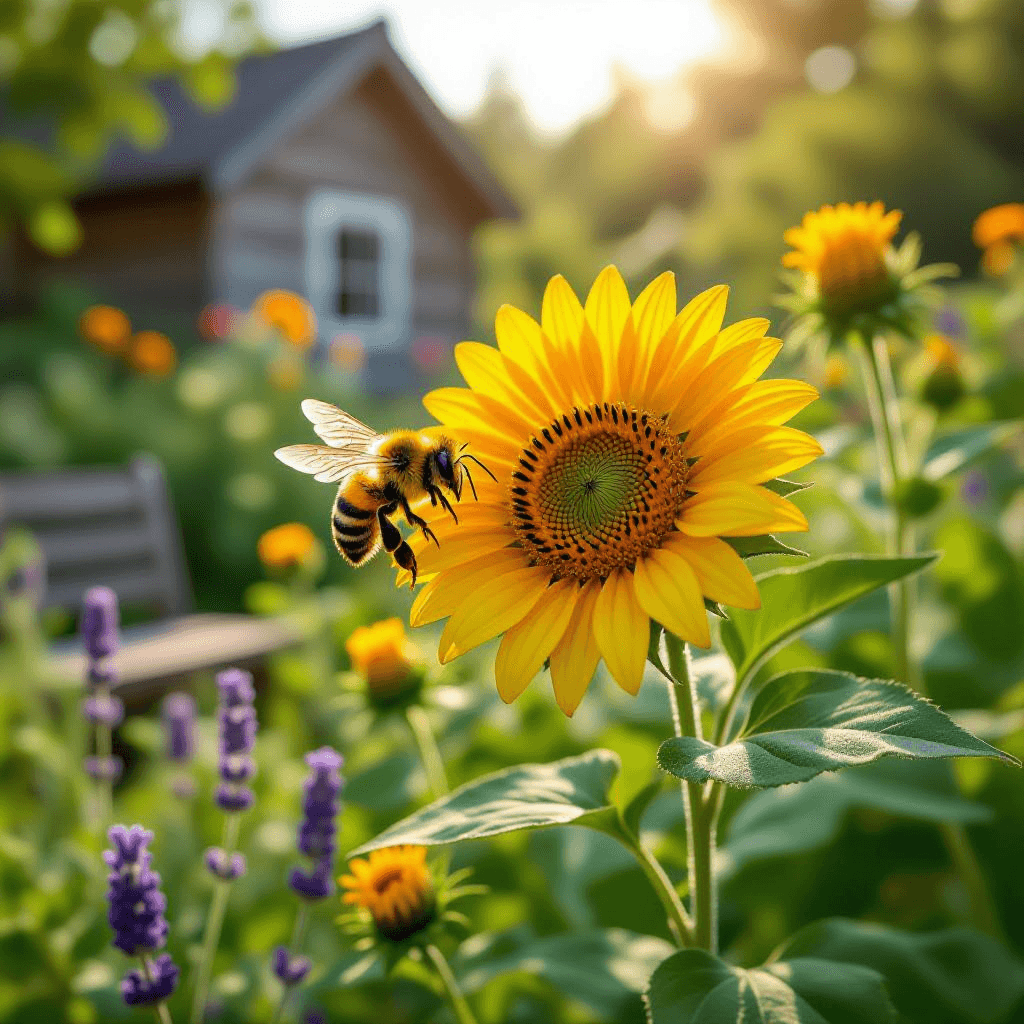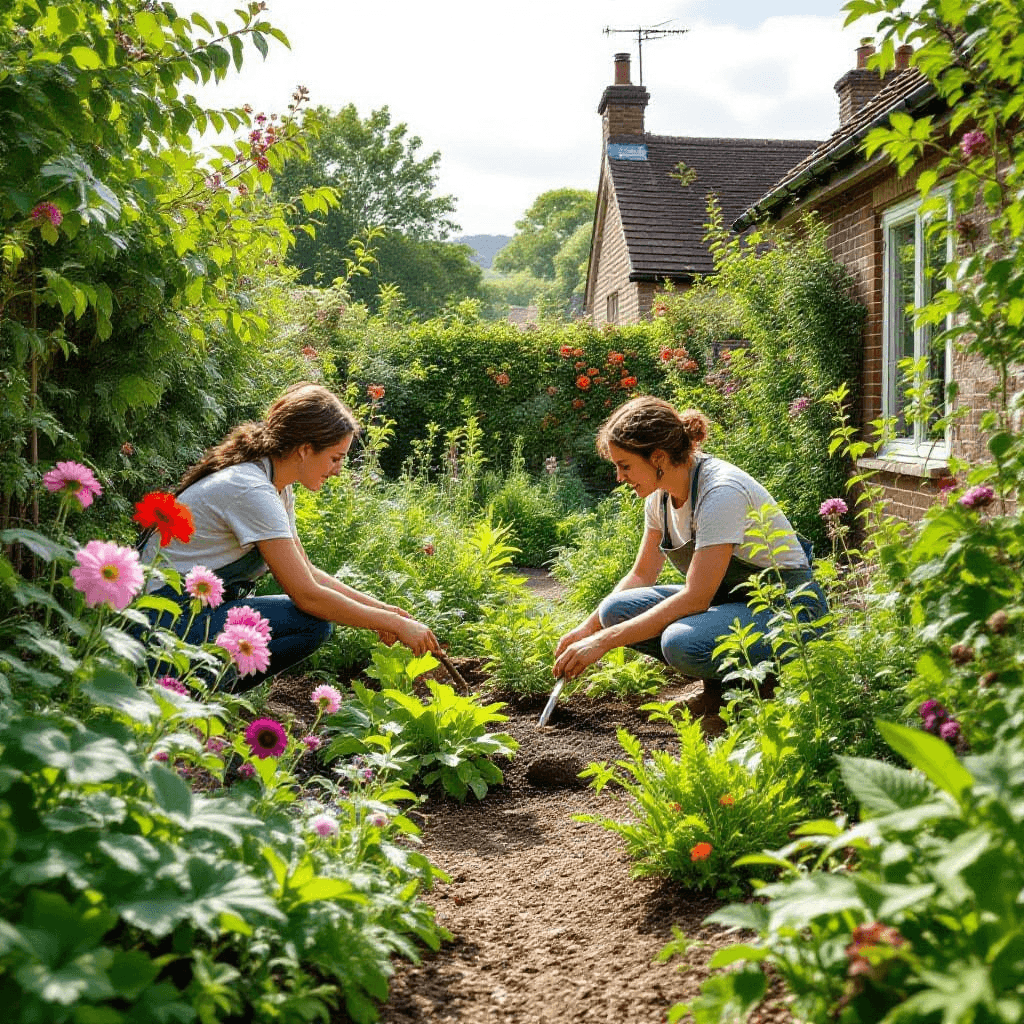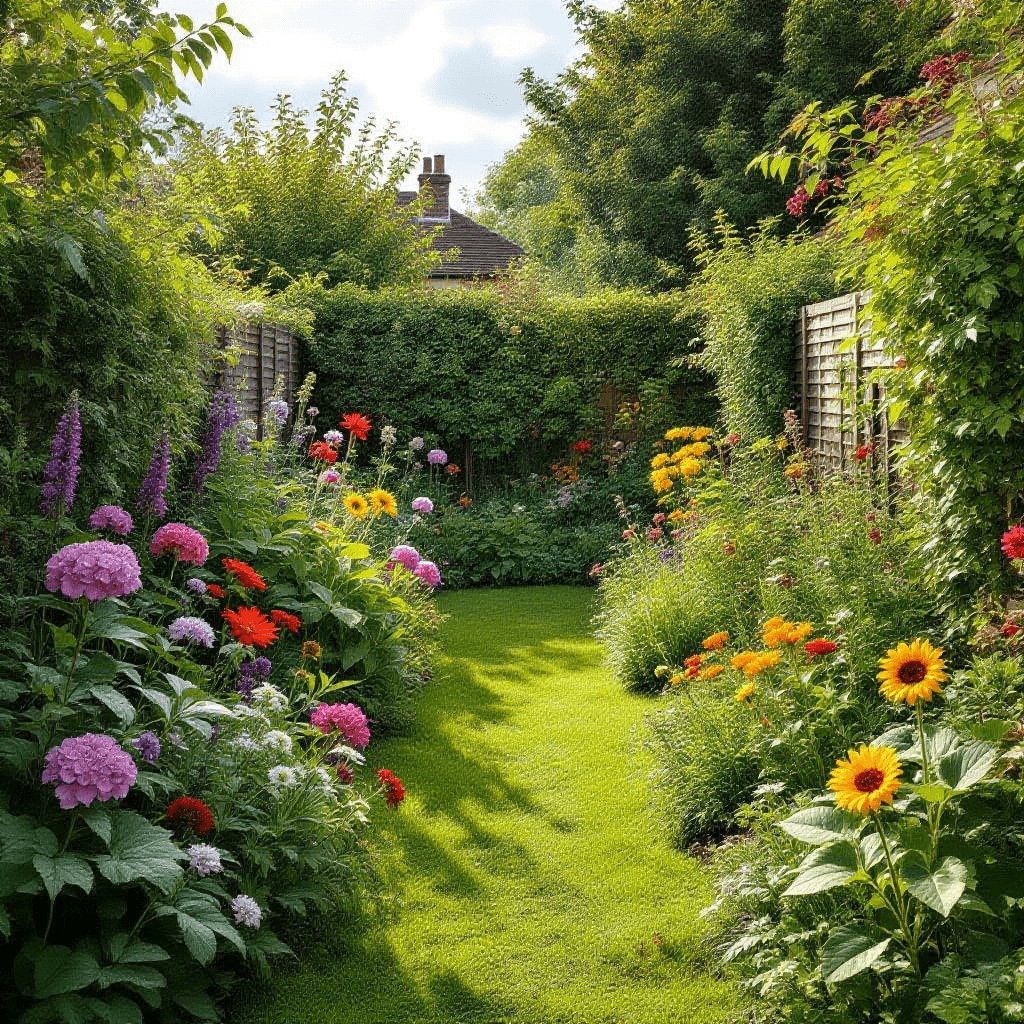Bees are the unsung heroes of our gardens, playing a crucial role in pollination and the overall health of our ecosystems. As pollinators, they are essential for the reproduction of many plants, ensuring a vibrant and diverse garden. In the UK, where biodiversity is under threat, attracting bees to your garden can significantly contribute to sustainable gardening practices. Here’s how you can create a bee-friendly haven in your outdoor space.
1. Understanding the Importance of Bees
Bees are vital for maintaining biodiversity and supporting food production. They pollinate a wide range of crops and wild plants, which in turn provide food and habitat for other wildlife. In the UK, there are over 250 species of bees, each with its unique role in the ecosystem. By supporting bee populations, you’re helping to preserve the delicate balance of nature.
2. Choosing the Right Plants for Bees
Selecting bee-friendly plants is the first step in attracting these vital pollinators:
- Native Wildflowers: Plants like oxeye daisy, red campion, and field scabious are excellent choices. They provide nectar and pollen that are well-suited to local bee species.
- Herbs: Bees love herbs such as lavender, mint, and rosemary. These plants not only attract bees but also add fragrance and culinary value to your garden.
- Fruit Trees and Shrubs: Apple, cherry, and blackberry bushes are great for bees and provide delicious fruits for you.
- Flowering Perennials: Plants like echinacea, asters, and sedums offer long-lasting blooms that provide a continuous food source for bees.
3. Creating a Bee-Friendly Habitat
Provide a welcoming environment for bees with these tips:
- Diverse Planting: Ensure a variety of plants that bloom at different times to provide a continuous supply of nectar and pollen throughout the growing season.
- Water Sources: Bees need water, too. Create a shallow dish or birdbath with pebbles for them to land on safely.
- Nesting Sites: Leave some bare soil or provide bee houses for solitary bees. These bees nest in tunnels in the ground or in hollow plant stems.
- Avoid Pesticides: Reduce or eliminate the use of pesticides, especially during the day when bees are most active. Opt for organic or natural pest control methods.
4. Designing Your Bee Garden
Plan your garden to maximize bee attraction and activity:
- Cluster Plantings: Group similar plants together to create large patches of color, making it easier for bees to locate and forage.
- Sunny Spots: Bees are most active in sunny conditions, so place your bee-friendly plants in areas that receive plenty of sunlight.
- Pathways and Borders: Create winding pathways lined with bee-friendly plants to encourage exploration and foraging.
- Wild Areas: Leave some areas of your garden wild and untidy, as these can provide valuable habitat for bees and other pollinators.
5. Supporting Local Beekeepers
Connect with local beekeepers to enhance your garden’s bee-friendly status:
- Adopt a Hive: Some beekeepers offer the opportunity to adopt a hive, providing you with honey and supporting local bee populations.
- Buy Local Honey: Purchasing honey from local beekeepers supports their efforts to maintain healthy bee colonies.
- Attend Workshops: Participate in beekeeping workshops or talks to learn more about bees and how to support them.
6. Common UK Bee Species and Their Needs
- Honeybees: These social bees live in hives and are managed by beekeepers. They are generalist foragers and will visit a wide variety of flowers.
- Bumblebees: These large, fuzzy bees are social and live in nests, often in the ground. They are important pollinators for many crops and wildflowers.
- Solitary Bees: These bees, such as mason bees and leafcutter bees, live alone and nest in tunnels. They are highly efficient pollinators and can be attracted by providing nesting sites.
7. Seasonal Considerations for Bee Gardening
- Spring: Plant early-blooming flowers like crocuses and primroses to provide an early food source.
- Summer: Focus on a variety of summer-blooming plants to sustain bee populations during their peak activity.
- Autumn: Include late-blooming plants like asters and ivy to support bees as they prepare for winter.
- Winter: Leave some seed heads and berries for overwintering bees and other wildlife.
8. Monitoring and Supporting Bee Health
Keep an eye on the health of your bee population:
- Observe Behavior: Pay attention to bee activity and behavior. A decline in activity might indicate a problem.
- Provide Shelter: Offer shelter from wind and rain with hedges, shrubs, or bee hotels.
- Report Sightings: Contribute to citizen science projects by reporting bee sightings to organizations like the Bumblebee Conservation Trust.
9. Educational Resources and Further Reading
Expand your knowledge with these resources:
- Books: “The Bee Book” by Charlotte Milner and “The Bee-Friendly Garden” by Kate Frey and Gretchen LeBuhn.
- Websites: The Bumblebee Conservation Trust and the British Beekeepers Association offer a wealth of information and resources.
- Local Groups: Join local gardening or beekeeping groups to share experiences and learn from others.
10. Inspiring Bee-Friendly Gardens to Visit
- Kew Gardens: Known for its diverse plant collections, Kew offers a great opportunity to see a variety of bee-friendly plants.
- Chatsworth House: This garden features extensive wildflower meadows that are a haven for bees and other pollinators.
- Local Community Gardens: Many community gardens in the UK have bee-friendly sections that you can visit for inspiration.
Attracting bees to your garden is not only beneficial for the environment but also enriches your gardening experience. By creating a bee-friendly habitat, you contribute to the health of local ecosystems and ensure a vibrant, sustainable garden. Happy bee gardening!


